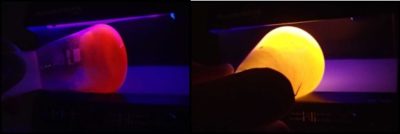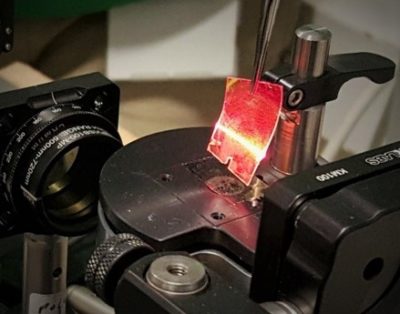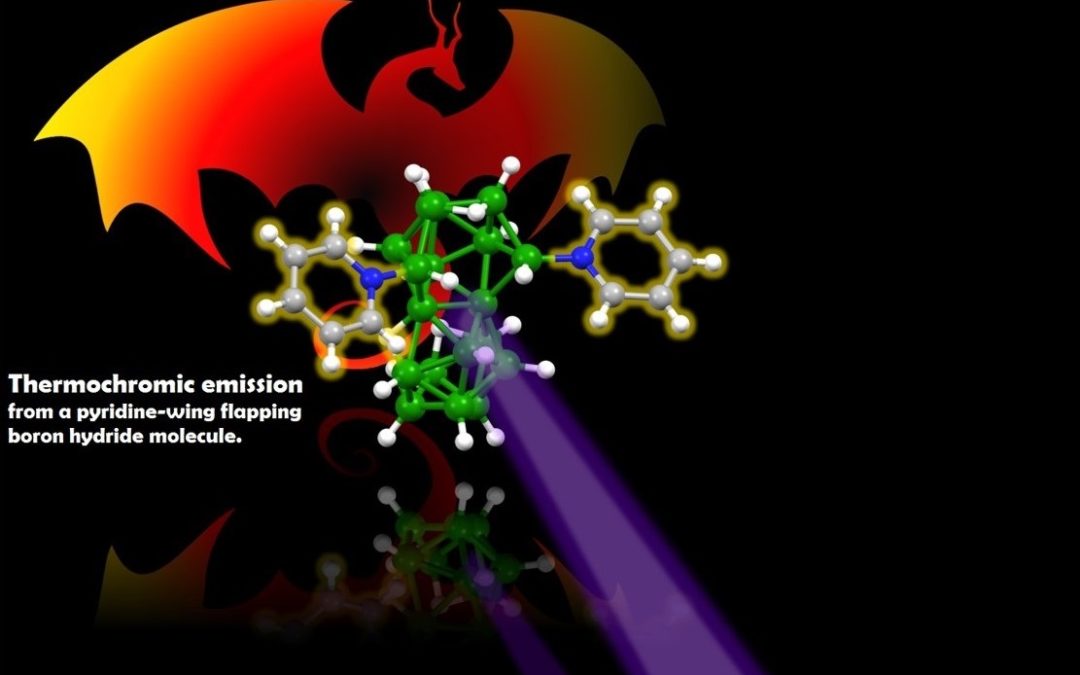Thermochromic fluorescence from a borane cluster with pyridine „wings“,
A new chemical compound, B18H20(NC5H5)2, with an unusual molecular structure that resembles a flying dragon, with a cluster boron hydride body and two unfurled pyridine „wings“, has been prepared and studied at the IIC. The molecule has fascinating photophysical properties. For example, at room temperature, solutions of B18H20(NC5H5)2 emit a 690 nm blood-red fluorescence. In the solid-state this emission is shifted to a brick-red 620 nm and intensifies due to restriction of the rotation of its pyridine “wing” ligands. In addition, there is a thermochromicity to the fluorescence of B18H20(NC5H5)2 – cooling to 8 K engenders a further shift in the emission wavelength to a brilliant-yellow 585 nm and a two-fold increase in intensity.

Immobilisation in a polystyrene thin-film matrix results in an efficient absorption of pumping excitation energy at 414 nm and a fiery-orange 609 nm photostable fluorescence. Such fluorescence from polystyrene thin films containing B18H20(NC5H5)2 can also be stimulated by emission from the highly fluorescent borane anti-B18H22 via energy transfer mechanisms. Polystyrene thin-film membranes doped with 1:1 mixtures of anti-B18H22 and B18H20(NC5H5)2 thus emit a 609 nm fluorescence and absorb light across more than 300 nm (250 nm to 550 nm): a significant spectral coverage possibly useful for luminescent solar concentrators – devices that collect light energy over a wide range of frequencies and concentrates that energy into a single wavelength emission.

M. G. S. Londesborough*, J. Dolanský, L. Cerdán*, K. Lang, T. Jelínek, J. M. Oliva, D. Hnyk, D. Roca-SanJuan*, A. Frances-Monerris, J. Martinčík, M. Nikl, J. D. Kennedy
doi: 10.1002/adom.201600694

